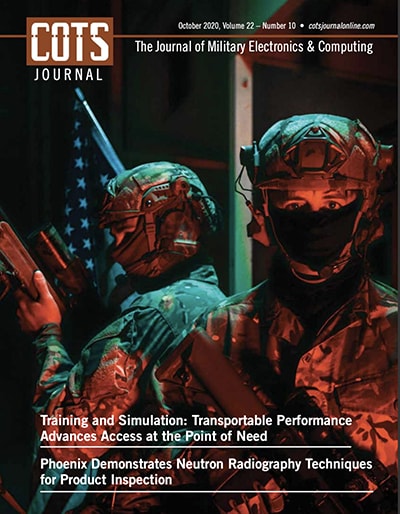Training and Simulation: Transportable Performance Advances Access at the Point of Need
Compact tech and distributed systems enable interoperable, mobile options for immersive Live, Virtual, Constructive (LVC) training.
By John Burie, Product Manager, Training & Simulation. For the full article, please visit COTS Journal HERE.
 The shift to transportable systems has the potential to reshape the training and simulation landscape for the modern military. These flexible, durable systems bring high performance to the point-of-need, making a difference in convenience, cost, accessibility, and results. Increased flexibility is an essential driver in the spectrum of training and simulation initiatives across the armed forces – including the U.S. Army’s Synthetic Training Environment (STE), or programs from Naval Air Warfare Center Training Systems Division, a division of NAVAIR tasked with ‘the full range of research and development in support of Naval training systems for all warfare areas and platforms.’
The shift to transportable systems has the potential to reshape the training and simulation landscape for the modern military. These flexible, durable systems bring high performance to the point-of-need, making a difference in convenience, cost, accessibility, and results. Increased flexibility is an essential driver in the spectrum of training and simulation initiatives across the armed forces – including the U.S. Army’s Synthetic Training Environment (STE), or programs from Naval Air Warfare Center Training Systems Division, a division of NAVAIR tasked with ‘the full range of research and development in support of Naval training systems for all warfare areas and platforms.’
These comprehensive programs build on the government’s Cloud First initiative established nearly a decade ago, treating training as a service and charged with more effectively bringing it to the point-of-need. Such initiatives shift the focus away from hardware and its associated maintenance, reducing costs and hardware footprint, and achieving highly flexible and scalable training capabilities. For military leaders, these are the advances helping to increase mission readiness for soldier, sailor, airman, or Marine, no matter the environment or geographic location.
For the original equipment manufacturers (OEMs) of training systems, it means focusing on modular, small footprint systems that scale down infrastructure while advancing crucial capabilities like high performance scene generation for live-virtual-constructive (LVC) training.
Today this approach also considers health risks and social distancing needs – a full training staff may not need to be onsite. Smaller systems allow trainees more room to spread out, and training systems delivered for small class groups are ideal for temporary or extended use.
To read the full article, please visit COTS Journal HERE.

Comments are closed